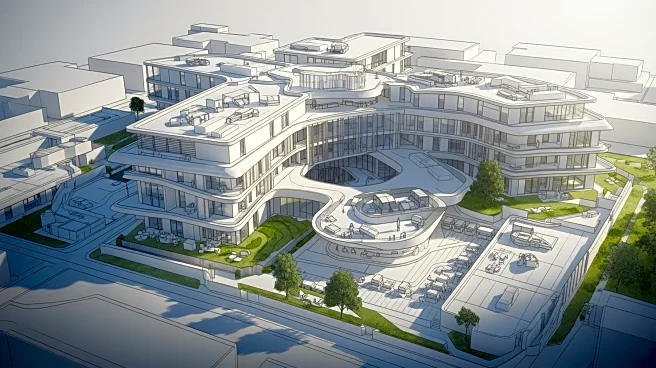What's Happening?
Building Design+Construction has released its 2025 Giants 400 Report, ranking the largest senior living facility architecture and architecture engineering firms in the United States. Leading the list are Perkins Eastman, Hord Coplan Macht, Arcadis North
America, SFCS, Moseley, Stantec, DiMella Shaffer, and HKS. These firms are recognized for their significant contributions to the design and development of senior living facilities, reflecting their expertise and leadership in the industry. The report highlights the financial performance and project capabilities of these firms, showcasing their role in shaping the future of senior living environments.
Why It's Important?
The ranking of these architecture firms is crucial as it underscores the growing demand for senior living facilities in the U.S., driven by an aging population. As the baby boomer generation continues to retire, the need for well-designed, accessible, and comfortable living spaces for seniors is increasing. These firms play a pivotal role in addressing this demand, influencing public policy and investment in senior care infrastructure. Their work not only impacts the architecture industry but also affects healthcare, real estate, and community planning sectors, as they contribute to creating environments that enhance the quality of life for seniors.
What's Next?
As these firms continue to lead in the design of senior living facilities, they are likely to focus on innovative solutions that cater to the evolving needs of seniors. This includes integrating technology for better healthcare management, sustainable building practices, and creating spaces that promote social interaction and mental well-being. Stakeholders such as healthcare providers, policymakers, and investors will be closely monitoring these developments to align their strategies with the growing market for senior living solutions.
Beyond the Headlines
The emphasis on senior living facilities also raises ethical and cultural considerations, such as ensuring equitable access to quality care and addressing the diverse needs of different senior demographics. The architectural choices made by these firms can influence societal attitudes towards aging and the value placed on elder care, potentially leading to broader cultural shifts in how communities support their aging populations.














